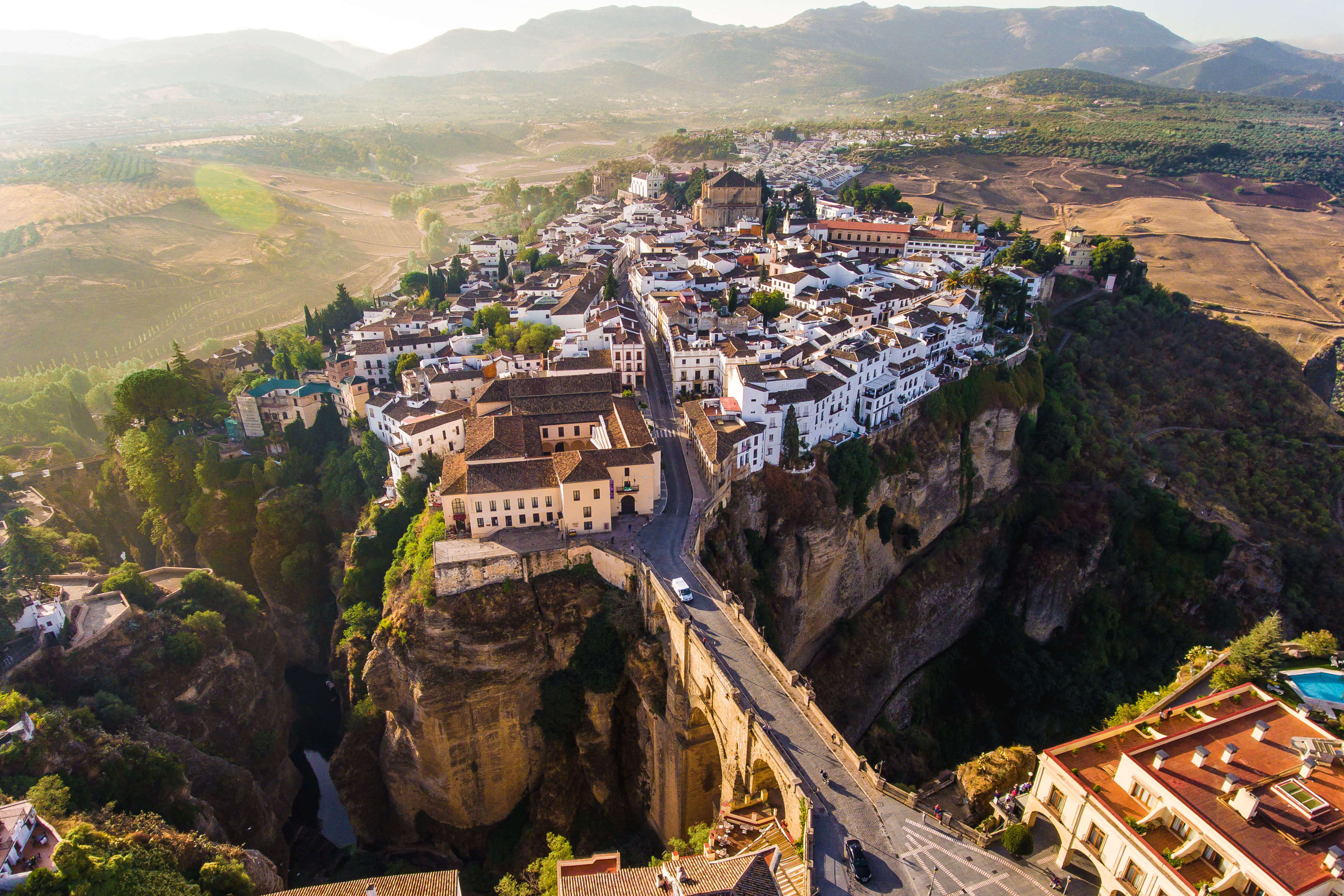1/1 Oops. Incorrect.
0%
0pts Earned
0/1correct
20/20
What Irish Easter ritual involves a herring?
In Ireland, butchers have been known to mark the end of Lent by staging a mock funeral for a herring — celebrating the end of a long stretch of giving up meat and only eating (and for butchers, only selling) fish. In some towns, a herring is hung on a stick and paraded through town. Eventually, the fish is tossed into a nearby river — also referred to as whipping the herring.
Source: Irish PostFuneral
11%
Wedding
20%
Family feast
41%
Herring hunt
29%
19/20
What is Ecuadorian Easter soup called?
Fanesca is a traditional Ecuadorian soup made and eaten throughout the six weeks of Lent, especially on Good Friday. The hearty soup is made with several grains and legumes, such as corn, beans, lentils, and peas. Together, these ingredients represent Jesus' 12 apostles. Another primary ingredient is salt cod (bacalao), drawing from ancient Christian symbolism to represent Jesus.
Source: NPRBolon de Verde
16%
Ceviche Pascua
53%
Llapingachos
18%
Fanesca
14%
18/20
What unique traditional dish is served at Easter in Newfoundland?
Flipper pie is a traditional dish from the Canadian province of Newfoundland and Labrador that is popular during the Easter season. It’s a meat pie whose main ingredient is seal meat — the seal is pan-fried then roasted with pork fat, onions, and root vegetables and then cooked inside a pie crust. Seal meat has been a staple in the region’s diet dating back to the early 18th century, when the Inuit population had few other nutritious food options.
Source: SmithsonianCod poutine
35%
Scoff
13%
Cod kiss cake
35%
Flipper pie
18%
17/20
Easter fires, an old German tradition, still happen in what U.S. state?
Since 1847, on the Saturday evening before Easter, the small town of Fredericksburg, Texas, has participated in the centuries-old tradition of Easter fires. Easter fires are common in Germany and other parts of Europe, and Fredericksburg was settled by German immigrants. But Texas’ tradition is actually said to have different origins. Local legends claim that fires on the area’s rolling hills were used to communicate during treaty negotiations between the German settlers and the Native Comanche people.
Source: The TexanTexas
18%
Pennsylvania
58%
Rhode Island
7%
Michigan
17%
16/20
What is "egg tapping"?
Egg tapping is a popular Easter Sunday morning tradition in European countries such as Bulgaria, Greece, and the Netherlands, to name a few. It’s a competitive Easter egg fight in which people take turns smashing their eggs against other participants’ eggs. Whoever’s egg stays intact is the winner; they’re expected to keep the egg until the following year, and the winning egg will reportedly bring good luck in the interim.
Source: WLTXAn Easter egg fight
23%
An ancient communication ritual
20%
A fertility ritual
41%
A traditional recipe
16%
15/20
What is "Easter crime"?
Since 1923, Norwegians have used the Easter holiday as a time to cozy up with a good old-fashioned crime novel. It started after a popular thriller about a train robbery was advertised in a local newspaper on the Sunday before Easter. Many confused the fiction for fact, and were heavily invested in the story. A new Easter tradition of reading these types of novels during the holiday – affectionately called Easter crime (“påskekrim”) — was born.
Source: Visit NorwayAn uptick in theft at Easter
10%
A popular Easter pastime in Norway
32%
A popular Easter story in Iceland
21%
A dramatic reenactment in Ireland
37%
14/20
Which country’s residents do NOT throw water at each other on Easter?
Wet Monday — or “Smigus Dyngus” — is a Polish Easter tradition with roots dating back to the 14th century. On Easter Monday, people take to the streets to soak each other using buckets of water. Similar Easter celebrations also take place in places like Ukraine (Watering Monday); the Czech Republic and Slovakia (Watering); and Hungary (Sprinkling) — but not in nearby Germany.
Source: Polish Museum of AmericaCzech Republic
21%
Poland
20%
Hungary
13%
Germany
46%
13/20
Where is the Dance of Death celebrated?
In many places around the world, Easter celebrations focus more prominently on the religious aspect of the holiday. One such place is the small coastal town of Verges, Spain, where locals enjoy a production known as the Dance of Death, or “Danza de la Muerte.” On the Thursday before Easter, participants dress up in skeleton costumes and parade through torch-lit streets as they reenact scenes from the Passion of Christ.
Source: Catalan NewsRomania
24%
Mexico
51%
Norway
3%
Spain
21%
12/20
How many marzipan balls are traditionally on a simnel cake?
Simnel cake is a traditional fruit cake eaten primarily in the U.K. and Ireland at Easter time. It typically has layers of almond paste or marzipan and includes dried fruits such as currants and raisins. The cake is topped with 11 marzipan balls, representing the 12 apostles — excluding Judas. Its association with Easter started with the tradition of serving it on Mothering Sunday, which falls on the fourth Sunday of Lent.
Source: BBCNone
20%
1
10%
6
44%
11
26%
11/20
Good Friday in Bermuda traditionally involves beaches and what else?
On Good Friday, Bermudians gather to not only eat codfish cakes and hot cross buns, but also to fly stunning homemade kites on sandy beaches. People work on the kites for months in advance; their geometric design is carefully constructed out of wooden sticks and tissue papers of every color. The tradition is said to symbolize the spring season and the resurrection.
Source: Bermuda NewsKites
45%
Wind surfers
11%
Volleyball
6%
Seafood boil
39%
10/20
Ukrainian Easter eggs, or "pysanka," are designed with what?
The sophisticated folk art designs on Ukrainian “pysanka” — or “pysanky” in the plural — are created through an application called the wax-resist (or “batik”) method. Wax is first applied to an egg shell using a wire tool, called a “kistka.” The egg is then dipped in dye, and the procedure is repeated until the design is complete. Eventually, the wax is melted off and the stunning patterns are revealed.
Source: TimeWax
34%
Beet juice
37%
Paint
22%
Chalk
7%
9/20
What costume do children in Sweden wear for Easter?
Forget fuzzy bunnies: In Sweden, children dress up as witches and — on the Thursday or Saturday before Easter — go door-to-door wishing people a happy Easter in exchange for candy. The tradition originated with a Swedish legend which states that, come Maundy Thursday, witches flew away to feast with the devil. As they returned, fire was used to scare them off, and to this day, some parts of Sweden and Finland incorporate bonfires into their Easter weekend celebrations.
Source: TimeGhost
9%
Witch
12%
Devil
3%
Angel
76%
8/20
What is Guatemala's traditional Easter celebration called?
Semana Santa — or Holy Week — is a stunning procession that takes place in Antigua, Guatemala. Each year, colorful and intricate “alfombras” (carpets) are the centerpiece of the celebration. The “carpets” consist of a layer of sand over cobblestone streets; the sand is then covered in a combination of flowers, fruits, plants, and dyed sawdust. They are laid starting 24 hours before the Good Friday parade begins.
Source: Condé Nast TravelerSemana Santa
23%
Easter Alfombra
28%
The Holy Gathering
27%
Santa Catalina Celebration
22%
7/20
What gets thrown out of windows at Easter on the Greek island of Corfu?
On the Greek island of Corfu, people observe Holy Saturday (the day before Easter Sunday) by throwing clay pots and jugs filled with water out of their windows. The origin of this unique custom, also called the "botides,” isn’t clear, although there are a few popular beliefs. One tale suggests that it was adapted from the Venetians (who ruled Corfu between the 14th and 18th centuries); others believe the act wards off bad spirits.
Source: ReutersClay pots
24%
Brass pots
3%
Tulips
20%
Cooked eggs
53%
6/20
Where are rabbits considered invasive and not celebrated on Easter?
Rabbits were introduced to New Zealand by European settlers in the 1800s, and the creatures have unfortunately become a significant threat to farmland and native plantlife. In an effort to help control the population, an Easter Bunny hunt has taken place every year on the Easter holiday weekend since 1991. It isn’t just an ecological issue, either — landowners are responsible for controlling the rabbit population on their own property, so the hunt has more than just one purpose.
Source: The GuardianGermany
5%
New Zealand
70%
Scotland
13%
Canada
11%
5/20
In France, Easter treats are delivered by what?
On the Thursday before Easter, known as Maundy Thursday, church bells around France go quiet. According to tradition, during this time, it is believed the bells (known as “cloche volant”) have grown wings and flown to the Vatican to mourn the death of Jesus. After being blessed by the Pope, the bells return to France on Easter morning and ring out as children search for eggs and other Easter goodies that have been delivered to their gardens.
Source: Google Arts and CultureFriendly witches
48%
Hot air balloons
17%
The Seine River
22%
Flying church bells
14%
4/20
When are hot cross buns traditionally eaten in the U.K.?
Hot cross buns, with their spiced sweetness and decorative cross made of icing on the top, are a popular Easter treat, particularly in the United Kingdom. They’re most commonly eaten on Good Friday, a tradition that is believed to have begun around 1592 during the reign of Elizabeth I. The queen forbade people to make or sell hot cross buns unless it was at a burial or on Good Friday.
Source: History UKGood Friday
50%
Easter Sunday
36%
Easter Monday
8%
Easter Midnight Mass
7%
3/20
In Germany, what kind of ornaments are hung on trees at Easter?
The German tradition of the Easter egg tree — also known as Ostereierbaum — has unclear origins, but it remains an important part of the holiday. Each spring, Germans decorate still-bare tree branches with colorful egg ornaments. Traditionally, these are handmade painted wooden eggs or painted hollowed-out shells.
Source: Martha StewartOranges
18%
Eggs
43%
Crosses
36%
Blades of grass
3%
2/20
What happens on the White House lawn every Easter?
In 1878, President Rutherford B. Hayes first officially opened the White House grounds to local children for an egg-rolling event on Easter Monday, and it has remained an annual tradition ever since. Children aged 12 and under are selected by lottery to attend the event, which includes rolling colored easter eggs across the White House’s South Lawn with a wooden spoon, as well as music, story time, and other activities.
Source: The White HouseEaster bunny pardoning
2%
Easter egg smashing
2%
Easter egg roll
93%
Easter mass
3%
1/20
What animal takes the Easter Bunny’s place in Australia?
Like in New Zealand, rabbits are not native to Australia and pose significant ecological threats. Instead of celebrating bunnies during the Easter holiday, Aussies turn to the Easter Bilby. The long-eared, pointy-nosed native marsupial does resemble a rabbit in size and appearance. The Easter Bilby tradition started with a nine-year-old child’s story in 1968; over the following decades, candy manufacturers began selling chocolate bilbies, with proceeds often going towards the creature’s conservation efforts.
Source: NPRBlue heeler
2%
Kangaroo
66%
Chicken
6%
Bilby
26%
Play Quizzes By Category
Play A Trending Quiz
Trending, related and recent quizzes you may be interested in







